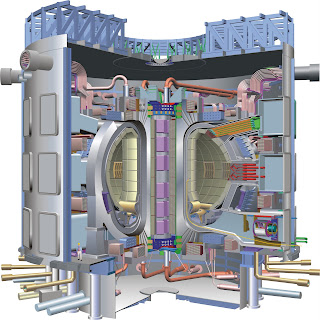
The second approach is to use a bunch of high energy lasers focussed on a small almost perfect sphere containing the reaction fuels and use the pressure from the resulting implosion to drive a fusion reactor. HiPer goes one step forward by having a gold cone inserted into the fuel capsule. The fuel capsule is first compressed using lasers and then a second laser superheats the gold cone, converting it into a plasma, which then compresses the fuel into a high density at the tip of the cone. This type of reaction is called a fast ignition reaction.

Aside from the physics, the other difference between the two approaches is cost. The first will cost around $10Billion, the second around $1 Billion. However, there is a much more significant criteria here - competition. Governments are notoriously bad at selecting and developing technologies and so competition is one way to ensure that at least two different approaches are attempted.
Here is an even better suggestion. A couple of entries back, I suggested having a sort of government sponsored X-Prize of an order of magnitude greater than the current X-Prizes awarded for space colonization. Why not use a similar approach with nuclear fusion? Who is to say that these $billion+ dollar projects will ever reach the final answer.
Maybe there is a much more modest approach that will also yield sustainable fusion. For example, there are some tantalizing hints with recent results from an experiment carried out by Mosier-Boss and Szpak that came out just this year. This experiment is similar that infamous cold fusion experiment by Pons and Fleischman but seems to show that there are nuclear reactions going on. Reproducing this experiment is hard, which makes me skeptical but still...
While I am always skeptical of things that appear to good to be true (because they usually are), a prize awarded for the first commercially feasible fusion reactor would be an unambiguous way to say that someone's done it and it would sort out the good physics from the dodgy physics.

No comments:
Post a Comment